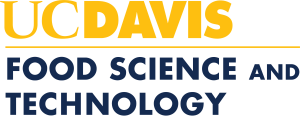A. Student Learning Outcomes
- To describe actions taken to maintain foods with the desired properties or nature for as long as needed
- To identify quality-loss mechanisms as biological, chemical, and physical
- To develop food handling practices that reduce the potential for foodborne illness (i.e., training to obtain a California Food Handler Card)
- To describe composition and variation of agriculture products, especially those of importance to California
- To implement preservation methods that make use of heat/cold, drying, acid, added chemicals, controlled air, pressure, and high-energy radiation.
- To identify indirect approaches to food preservation: packaging, hygienic design, sanitation, GMP
- To use SOPs and SSOPs during laboratory exercise
B. Tools to addresses outcomes - listed on syllabus as “Grading”
Weekly Lab reports: 40%
3 written examinations (typically multiple choice): 40%
Participation (timeliness, lab conduct & safety, effort, performance): 20%
C. Brief summary of assessment results to date
FST 50 Introduction to Food Preservation provides practical applications of food preservation principles. In 2012, FST 50 was restructured from a lecture only course to a lecture/laboratory course. The course is currently restricted to Food Science majors and has been offered three times in the lecture/laboratory format. Performance and effort are evaluated as given in (B). The average score on multiple choice examinations is typically in the range of 70-72%; lab reports average 88-92% (much higher). Participation scores are excellent. In Fall 2013, on a straight scale, the average course grade was 88.5 ± 3.8 (one standard deviation).
As with (all) UC Davis courses, students complete a course evaluation form at the end of the quarter. The form includes evaluation of the course content, the instructor(s) and the teaching assistant(s). During this development period (2012-14), we (instructor and TAs) assess and respond to the comments on these evaluations to improve the laboratory exercises, as well as lecture content. The evaluations of FST 50 are available to the instructors and TAs after submission of the final course grade. These evaluations become a part of the faculty instructor’s dossier for merit and promotions (and are therefore available to HERB).
